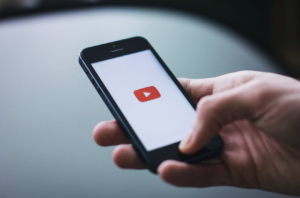The new year is fast approaching and, with the hustle and bustle of the marketing industry, trends are already starting to emerge. With new technology comes new tactics so, we’re giving you a few ideas on how to ramp up your marketing skills and stay ahead of the competition in 2020:

Livestream Video
Studies show that 80% of consumers prefer watching a live video from a brand as opposed to reading a blog, and around 67% of those consumers are more likely to invest in a future event after watching a livestream of a similar event. These numbers are expected to rise in 2020, meaning now more than ever is the time to utilize this marketing tool. The chances are your brand is already active on some of the most popular livestreaming platforms – Facebook, YouTube, Instagram, Twitter and Periscope – so integrating this tactic into your marketing strategy should be a simple feat. Another advantage of livestreaming is that brands also have the opportunity to directly interact with their customers and receive feedback on their content in real time. Even better, livestreams can be saved and repurposed for future content needs.
Optimize Smart Speakers
As of January 2019, there have been more than 118 million smart speaker devices sold in the United States alone, yet it seems this fountain of opportunities for marketing have gone relatively untapped. To get ahead of this trend, companies may consider positioning a product or service in terms of a “branded skill” – A customer-centric way to directly promote to consumers. Major brands are already taking advantage of this tactic, such as:
- UBER: Set up Uber’s branded skill through your smart device – All consumers need to do is say, “Alexa, call me an Uber”. The device will recognize this action and team up with the app to get a ride on its way.
- PATRÓN: Consumers no longer need to spend their time searching for the perfect cocktail to pair with dinner – Patrón’s branded skill allows smart speakers to effortlessly provide recipes, bartending tips and fun facts about the liquor to consumers.
- TIDE: If consumers have a stain on their carpet, Tide is always there to help. The company’s branded skill allows consumers to ask their smart speaker for helpful tips and tricks to get those pesky stains out, with all recommendations reflecting the use of Tide products.

Personalize
With the rise of technology, consumers are looking to have a personalized shopping experience. In order to have that experience, access to a fair bit of consumer information is necessary. While websites can track browsing and buying behaviors, more brands are urging users to create accounts with their company. Doing so stores the consumer’s personal information to the brand’s system, and the company can then serve that consumer products based on their preferences via on-screen or email promotions. According to Shopify, 75% of consumers actually prefer retailers to use their personal data as a means to improving their shopping experience, and this trend is expected to carry through to 2020.
Zero Moment of Truth
The Zero Moment of Truth (ZMOT) is the moment in the buying decision when the consumer makes the decision to research a product prior to purchasing it. This habit is ever-present, and the amount of data, reviews and product information readily available on the internet has made it a breeding ground for information overload. By understanding your consumer’s process for gathering information, marketers can tailor their overall shopping experience to ensure consumers aren’t lost in the sales funnel. Product-based conversations, whether on your website, blog pages, etc., are more vital now than ever before. Our advice? Start with your brand’s social media – Monitor your mentions and industry trends, and develop your overall marketing strategy based on your target market’s needs.
Micro-Influencers
Influencer marketing has been on the rise in 2019 and we’re anticipating this strategy to grow in 2020. Influencers partner with brands to promote or review products, services and destinations for their audience in an effort to expand on existing marketing efforts. More specifically, micro-influencers work on a smaller scale, having a following of 1,000-100,000 users. These influencers have developed a tight-knit, trusting and responsive audience based on a niche interest. For brands looking to tap into the influencer marketplace without the fees of a celebrity presence, a micro-influencer allows brands to communicate to their target audience in exchange for a sample of your brand’s product or service.

Understanding SEO
While SEO is not a new topic in the marketing world, the evolution of technology has led to a misconception of how SEO is actually effecting your business. We’re debunking the most common SEO myths so you can start your 2020 strategy off right:
- Web security isn’t important to SEO rankings. This is a big misconception has data breaches are constantly on the rise. Consumers need to feel safe when they visit your site and interact with your brand, and having Secure Sockets Layer (SSL) enabled – meaning that the site is secured and consumer data is being stored safely – can mean the difference between a high search ranking and a low one. Earlier this year, Google publicly announced that two websites that would be otherwise equal in search results will rank differently if one is SSL-enabled, with the more secure brand rising above.
- More links are better than more content. While the thought is often that more links will help a company work to the top of the search ranks, quality control software analyzes the purpose of each link. This means that quality is more important than quantity in terms of SEO.
- Good user experiences not required. When the quality of a website is being considered for SEO ranking, user experience is incredible important. Google has stated that their platform is increasingly focused on providing results with quality content, including the usability of a company’s website. To enhance your company’s chances of reaching the top, make your site mobile-friendly, and enhance the page load time and bounce rate.
With the new year (and a new decade) on the horizon, it’s important to stay #InTheLoup on marketing trends. Whether you’re reading up on industry news, magazines or staying tuned to the LHG blog for important information, getting a jump start on industry happenings can help gain the interest of consumers and set you apart from your competitors as we break into 2020.
from Lou Hammond Group https://louhammond.com/2019/10/30/2020-marketing-trends/
via https://louhammond.com







